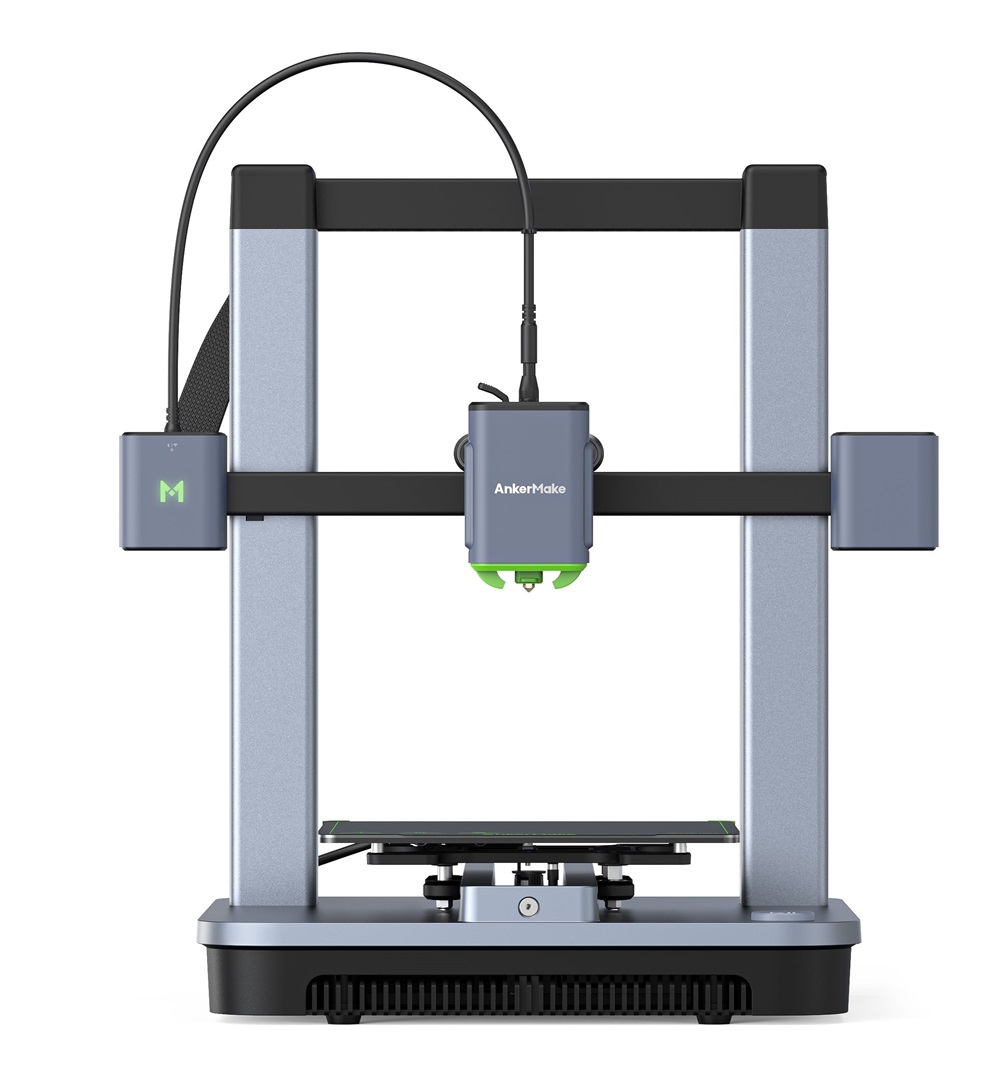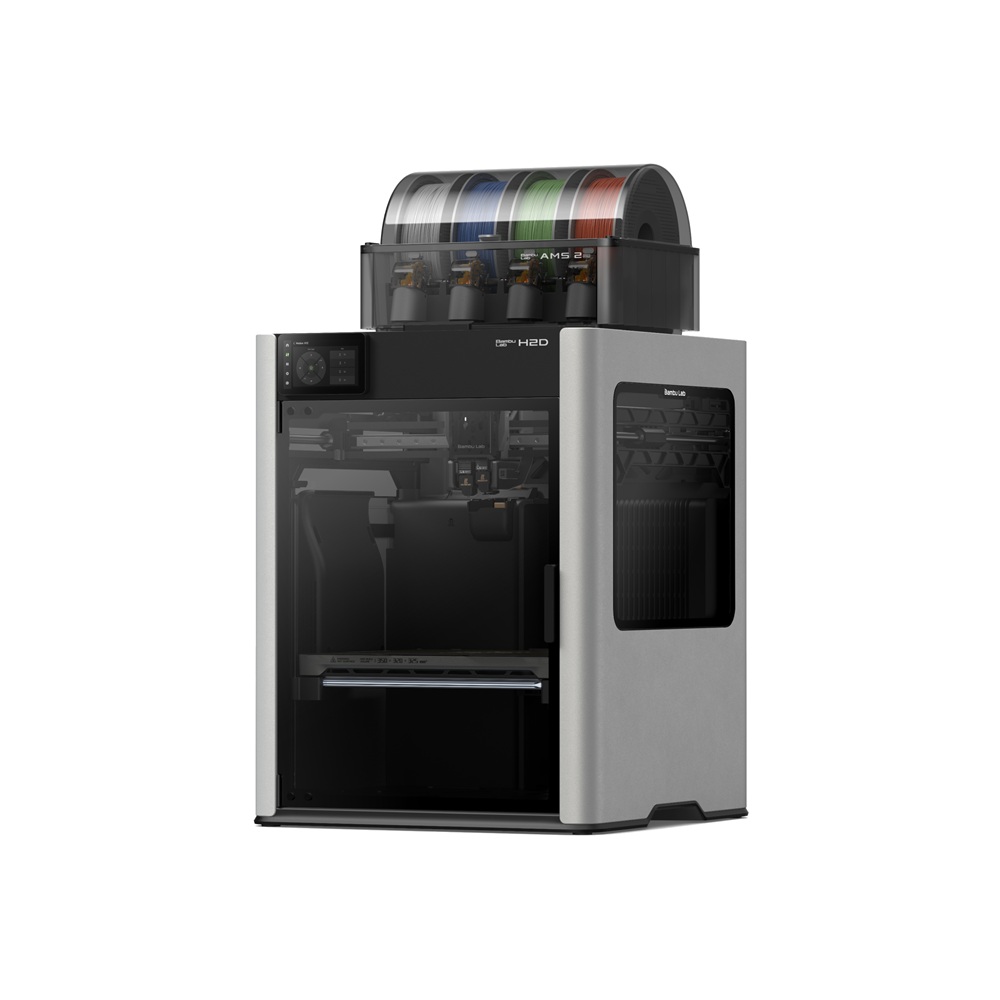Compare M5C vs H2D
Comparison between the best 3D printers
Choose the best 3D printer at the best price. The cheapest 3D printers are here.
Buy a 3D printer here with 3D Fila.
 |
 |
|
| Model | M5C[BUY M5C] |
H2D |
| Printing Material | Filament | Filament |
| Buy Filament for AnkerMake M5C | Buy Filament forBambu Lab H2D | |
| Estimated price | $399,00 | $1899,00 |
| Manufacturer | AnkerMake | Bambu Lab |
| Release Year | 2023 | 2025 |
| Print Volume [mm] | 220x220x250 | 350x320x325 |
| Printer Size [mm] | 466x374x480 | 492x514x626 |
| Weight [kg] | 9,6 | 42,3 |
| Power Loss Recovery | YES | YES |
| Enclosed printer | NO | YES |
| Bed Leveling | Automatic | Automatic |
| Filament End Sensor | YES | YES |
| Bed type | Heated | Heated |
| Power supply system | Direct Drive | Direct Drive |
| Standard nozzle | 0,4 | 0,4 |
| Maximum Nozzle Temperature [°C] | 300 | 350 |
| Maximum Bed Temperature [°C] | 100 | 120 |
| Maximum printing speed [mm/s] | 500 | 600 |
| Filament holder | YES | YES |
| Camera for supervision | NO | NO |
| Recommended filaments | PLA, PETG, TPU, ABS, PA, PLA-CF, PETG-CF, PA-CF | PLA, PETG, ABS, ASA, TPU, PVA, Nylon (PA) |
| Recommended slicers | AnkerMake Studio (macOS, Windows), Simplify3D, Ultimaker Cura, PrusaSlicer | Bambu Studio |
| Maximum Resolution [mm] | 0,1 | 0,01 |
| Processor | ||
| Display | Touchscreen 5'' | |
| Power Supply | 350 W | |
| Connectivity | Wi-Fi, USB-C, Bluetooth | Wifi, Bambu bus, Cartão SD |
| Operating systems | Windows, Linux e Macbook | Windows, Mac, Linux |
| Date of registration in the system | 2024-09-11 | 2025-03-31 |
| Release date | 2023 | 2025 |
| Extra features | The AnkerMake M5 printer stands out for its impressive print speed, reaching up to 500mm/s. It features AI print monitoring, an integrated camera for creating timelapses, auto-leveling bed with pressure sensor, direct extruder, flexible PEI-coated build plate, and Wi-Fi and USB-C connectivity. Assembly is quick and easy, and the printer is designed to deliver high print quality and ease of use. | Bambu Labs H2D combines high-speed 3D printing with a chamber heated up to 65 °C, dual extrusion with automatic nozzle switching, an AMS for filament drying and exchange, and AI sensors that detect failures. It offers optional laser and digital cutting capabilities, features intelligent calibration through computer vision, vibration control, enhanced fire safety, and real-time camera monitoring. |
| Support for multiple colors and materials (AMS and CFS) | NO | YES |
Notes * |
||
| Cost-benefit | 7 / 10 | 7 / 10 |
| Hardware | 3.2 / 10 | 8 / 10 |
| Tela | . | . |
| Print volume | 3 / 10 | 4 / 10 |
| Performance | 4 / 10 | 5 / 10 |
| [BUY M5C] |
Conclusion |
| In comparing the AnkerMake M5C and the Bambu Lab H2D, we can observe distinct differences that cater to varying user needs and budgets. The AnkerMake M5C, priced significantly lower, is a lightweight and compact printer ideal for hobbyists and those new to 3D printing. Its impressive maximum printing speed of 500 mm/s, along with features like automatic bed leveling and a heated bed, make it a strong contender for quick prototyping. However, its relatively smaller print volume and absence of an enclosed build chamber may limit its versatility with certain materials or larger projects. On the other hand, the Bambu Lab H2D, while considerably more expensive, offers advanced features and a larger build volume, making it suitable for professional users or those requiring higher performance. Its dual extrusion capability, heated chamber, and advanced monitoring systems enhance the potential for complex and high-quality prints. Additionally, the printer’s ability to support multiple colors and materials expands its utility for diverse applications. In summary, the choice between the two models ultimately hinges on the user’s specific requirements. The M5C presents an attractive cost-benefit for casual users focusing on speed and ease of use, while the H2D resonates with professionals seeking superior performance, functionality, and versatility in their 3D printing endeavors. Users should consider their budget, desired features, and intended applications when making a decision. |

